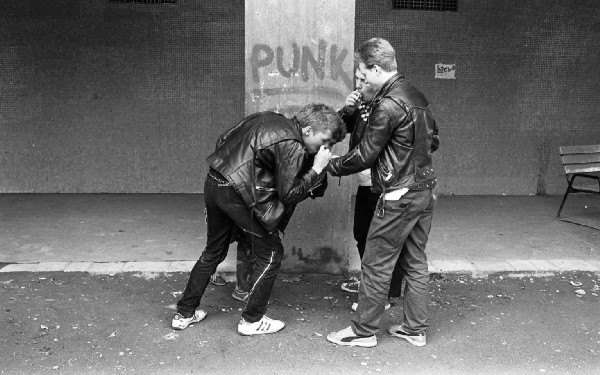Born in 1945 in Szatmárnémeti, Romania, Tamás Urbán received his high school diploma in Debrecen in 1964, then moved with his parents to Budapest. Because he was interested in the connection between sound and image while in high school, he applied to the Budapest Technical University in the department of sound engineering, but there he found the proportion of theoretical classes too much in relation to practice, and thus he did not finish his studies.
Already at the age of 15, his articles had been published in the newspaper, Pajtás, as well as a number of photos in the regional Hajdú-Bihari Napló. In Budapest, he went to the editorial offices of Magyar Ifjúság (Hungarian Youth), and here, under the influence of István Kotroczó – in his own words – „he fell in love with” photography. In 1969, he was accepted at Pest Megyei Hírlap, then began to work for Ifjúsági Magazin (Youth Magazine). Meanwhile, he completed the photojournalism department at the Hungarian Press Association (MÚOSZ) Journalism School, as a student of Éva Keleti and Tamás Féner.
For twenty years, he lived and worked among young people; thus, he had the occasion to see the multilayered youth problems of the early 1970s – the subject had hardly been able to appear in the press at the time. He did his diploma work on the life of the youth living in the boarding school in Aszód; he also showed the exhibition on site, but for “political” reasons, it could only get greater publicity after intense struggles.
From 1976, he was a founder of the Studio of Young Photographers (FFS), as well as its first Secretary; the Studio also included the Aszód report in its first exhibition.
During the eighties, he photographed in Hungary’s prisons, practically living among the inmates, in order to have them accept him, and to get to know the convicts. It was here that he made the acquaintance of Pillangó (Butterfly: Ferenc Deák), tattooed from head to toe, whose life he then followed-observed-photographed-helped for years. The expansive photo series is unique, and it attained success in Hungary and abroad.
On his creative method, he professed in an interview: “I photographed my material that I felt was serious with a Nikon FM2 and a 35mm lens. I never used a flash, nor did I use a wider viewing angle or telephoto lens, and I didn’t intervene in the images”.
(Photos: Tamás Urbán/FORTEPAN, via The Körmendi-Csák Photography Collection)
Already at the age of 15, his articles had been published in the newspaper, Pajtás, as well as a number of photos in the regional Hajdú-Bihari Napló. In Budapest, he went to the editorial offices of Magyar Ifjúság (Hungarian Youth), and here, under the influence of István Kotroczó – in his own words – „he fell in love with” photography. In 1969, he was accepted at Pest Megyei Hírlap, then began to work for Ifjúsági Magazin (Youth Magazine). Meanwhile, he completed the photojournalism department at the Hungarian Press Association (MÚOSZ) Journalism School, as a student of Éva Keleti and Tamás Féner.
For twenty years, he lived and worked among young people; thus, he had the occasion to see the multilayered youth problems of the early 1970s – the subject had hardly been able to appear in the press at the time. He did his diploma work on the life of the youth living in the boarding school in Aszód; he also showed the exhibition on site, but for “political” reasons, it could only get greater publicity after intense struggles.
From 1976, he was a founder of the Studio of Young Photographers (FFS), as well as its first Secretary; the Studio also included the Aszód report in its first exhibition.
During the eighties, he photographed in Hungary’s prisons, practically living among the inmates, in order to have them accept him, and to get to know the convicts. It was here that he made the acquaintance of Pillangó (Butterfly: Ferenc Deák), tattooed from head to toe, whose life he then followed-observed-photographed-helped for years. The expansive photo series is unique, and it attained success in Hungary and abroad.
On his creative method, he professed in an interview: “I photographed my material that I felt was serious with a Nikon FM2 and a 35mm lens. I never used a flash, nor did I use a wider viewing angle or telephoto lens, and I didn’t intervene in the images”.
(Photos: Tamás Urbán/FORTEPAN, via The Körmendi-Csák Photography Collection)














































0 comments:
Post a Comment